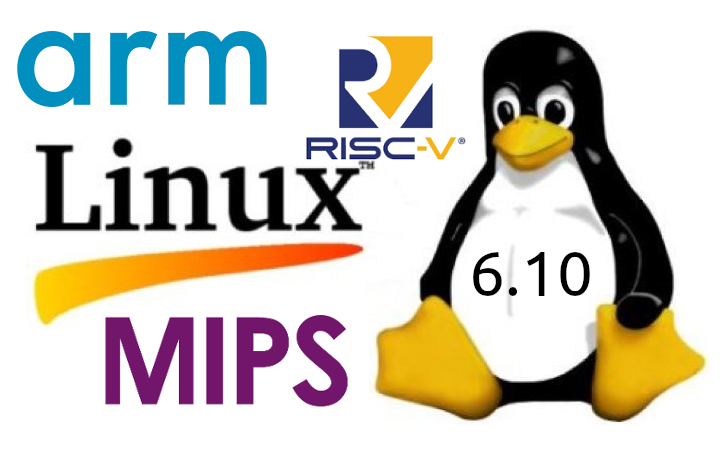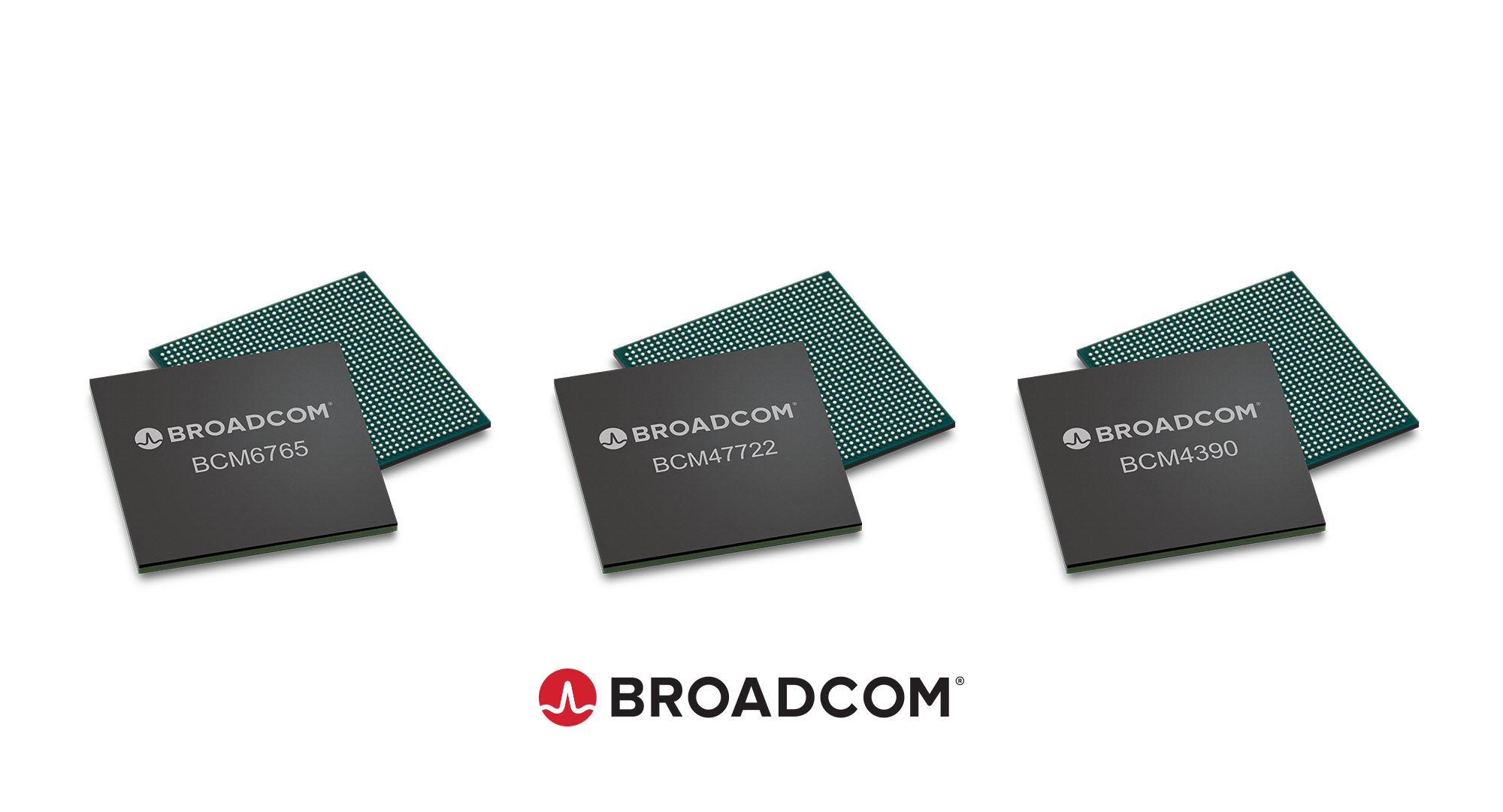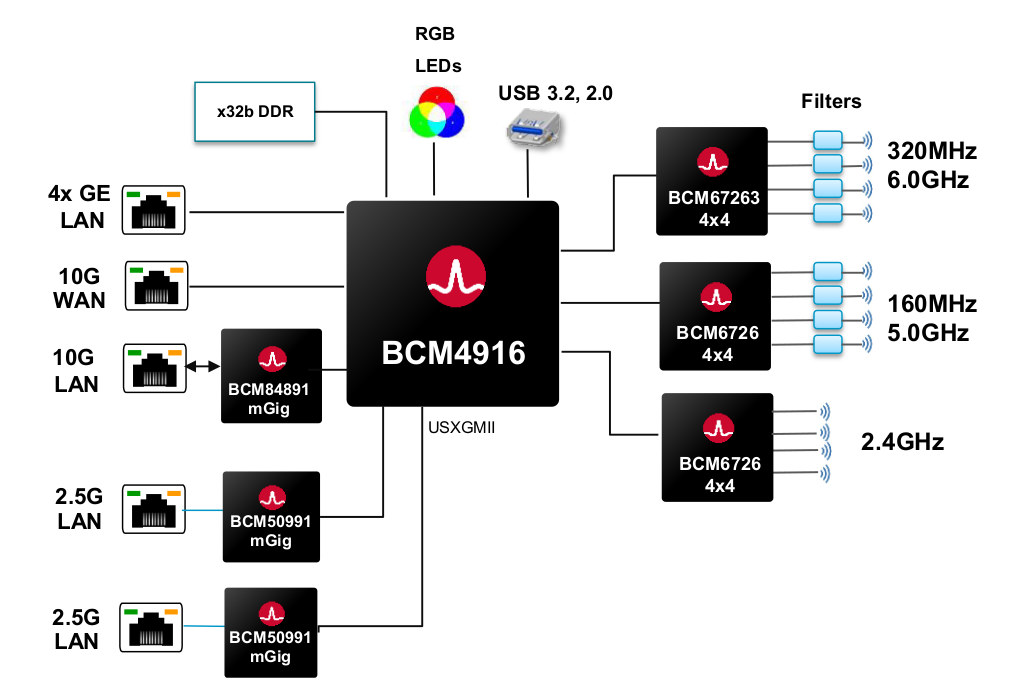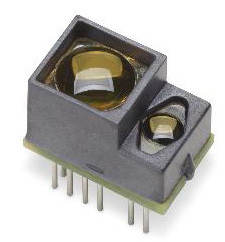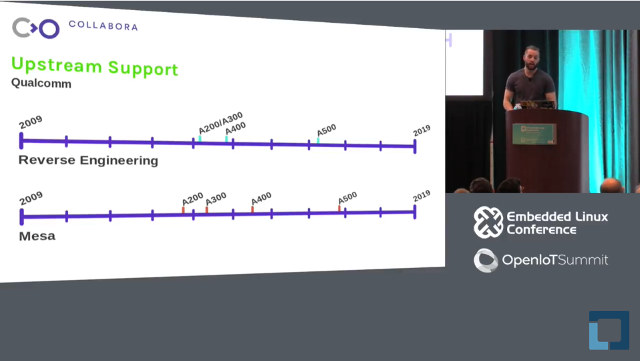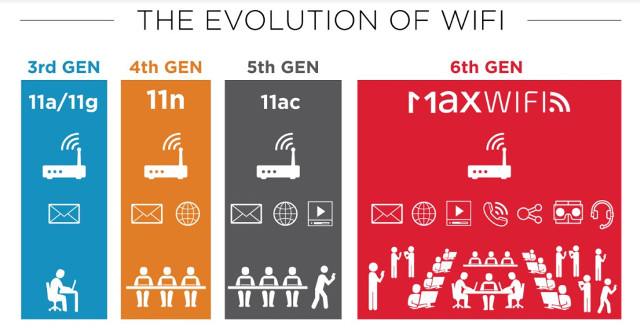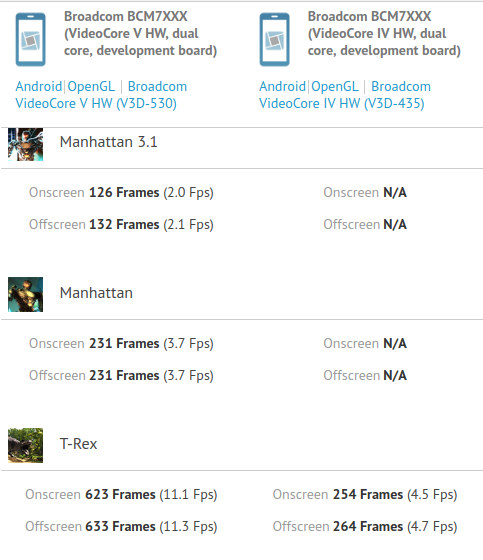Linux Torvalds has announced the release of Linux 6.10 on LKML: So the final week was perhaps not quote as quiet as the preceding ones, which I don’t love – but it also wasn’t noisy enough to warrant an extra rc. And much of the noise this last week was bcachefs again (with netfs a close second), so it was all pretty compartmentalized. In fact, about a third of the patch for the last week was filesystem-related (there were also some btrfs latency fixes and other noise), which is unusual, but none of it looks particularly scary. Another third was drivers, and the rest is “random”. Anyway, this obviously means that the merge window for 6.11 opens up tomorrow. Let’s see how that goes, with much of Europe probably making ready for summer vacation. And the shortlog below is – as always – just the last week, not some kind […]
Broadcom unveils 2nd generation WiFi 7 chipsets: BCM6765, BCM47722, BCM4390
Broadcom has announced its second generation WiFi 7 chipsets: the BCM6765 residential WiFi 7 access point chip, the BCM47722 enterprise WiFi 7 access point chip with dual IoT radios that support simultaneous operation for Bluetooth Low Energy (BLE), Zigbee, Thread, and Matter protocols, and the BCM4390 low-power Wi-Fi 7, Bluetooth, and 802.15.4 combo chip designed for use in mobile devices. This follows the introduction of Broadcom’s first WiFi 7 chipsets in April 2022 with residential and enterprise WiFi 7 access point chips, and a WiFi 7 client chip, but the second generation access point chipsets support 320 MHz 2-stream Wi-Fi operation and add extra features, and the BCM4390 optimized costs bringing WiFi 7 to lower-prices phones and devices. BCM6765 residential Wi-Fi access point chip highlights: CPU – Quad-core ARMv8 CPU with 10Gbps Ethernet PHY WiFi 7 Dual 2×2 tri-band (2.4, 5, and 6 GHz) capable radios that support simultaneous operation […]
Broadcom unveils WiFi 7 chips for access points and clients
We first noticed the new WiFi 7 (802.11be) standard in January 2022 with MediaTek demonstrating Filogic 802.11be processors, and later Qualcomm introduced the FastConnect 7800 WiFi 7 and Bluetooth 5.3 solution for wireless clients, but we had not seen anything for WiFi 7 access points yet. Broadcom has now announced four WiFi 7 chips for access points with the BCM67263, BCM6726, BCM43740, and BCM43720 up to 11.5 Gbps PHY rate, plus the BCM4398 Wi-Fi 7 and Bluetooth 5 combo chip for mobile handsets with up to 6.05 Gbps PHY rate. We’ve not quite at the theoretical 40+ Gbps PHY rate for WiFi 7, but those solutions will more than double the speed of existing Wi-Fi 6/6E solutions, while simultaneously delivering lower latency and extending range. The BCM67263 and BCM6726 chips are designed for the residential Wi-Fi 7 access point market with the following key features: Support for 4 streams of […]
Wi-Fi Certified 6 Program Available for Products based on Broadcom, Cypress, Intel, Marvell, and Qualcomm 802.11ax Chips
Last year the WiFi alliance introduces a new naming scheme for WiFi using numbers instead of IEEE standards so that WiFI 4 is 802.11n, WiFi 5 is 802.11ac, and WiFi 6 is the latest 802.11ax standard with data throughput up to 10 Gbps, and a better ability to manage high-density scenarios. Shortly after (November 2018) we also got news of the first WiFi 6 routers from ASUS and NETGEAR, but the WiFi alliance only just announced the launch of their Wi-Fi Certified 6 program that promises optimal interoperability and security. The program will make sure the following features are properly implemented: WPA3 WiFi security Orthogonal frequency division multiple access (OFDMA): effectively shares channels to increase network efficiency and lower latency for both uplink and downlink traffic in high demand environments Multi-user multiple input multiple output (MU-MIMO): allows more downlink data to be transferred at once and enables an access point […]
Broadcom AFBR-S50 Industrial ToF Sensor Works up to 10 Meters
Time-of-Flight (ToF) ranging sensors can measure distance accurately using laser light and are sold in a really tiny package. STMicro VL53L0X ToF sensor may be the most popular with a 2 meter range, and its ultra low cost. The sensor got an extended range up to 4 meter with the recent launch of VL53L1X, but STMicro is not the only company providing such solution, and Broadcom has just introduced their AFBR-S50 ToF sensors for industrial applications and a range of up to 10 meters. Two versions are offered with different laser light sources, field of view, and number of pixels: AFBR-S50MV680B 680nm laser light source One illuminated pixel FOV 1.55° x 1.55° Single voltage – 5V supply AFBR-S50MV85G 850nm laser light source 9-16 illuminated pixels FOV 6.2° x 6.2° Single voltage – 5V supply The multipixel version of AFBR-S50 supports up to 3,000 frames per second with up to 16 […]
Status of Embedded GPU Ecosystem – Linux/Mesa Upstream Support (ELC 2018 Video)
The Embedded Linux Confernce is on-going, and the Linux Foundation has been uploading videos about talks in a timely manner on YouTube. I checked out at RISC-V keynote yesterday, but today I’ve watched a talk by Robert Foss (his real name, not related to FOSS) from Collabora entitled “Progress in the Embedded GPU Ecosystem”, where he discusses open source software support in Linux/Mesa from companies and reverse-engineering support. The first part deals with the history of embedded GPU support, especially when it comes to company support. Intel was the first and offers very good support for their drivers, following by AMD who also is a good citizen. NVIDIA has the Nouveau driver but they did not really backed it up, and Tegra support is apparently sponsored by an aircraft supplier. Other companies have been slower to help, but Qualcomm has made progress since 2015 and now support all their hardware, […]
Broadcom Introduces Three 802.11ax “Max WiFi” Chips: BCM43684, BCM43694 & BCM4375
We’ve already written about the new 802.11ax WiFi standard that promises up to 10 Gbps data rates, support for 2.4 & 5 GHz bands, up to 4x longer range, and better handling of high density scenarios. It appears 802.11ax we’ll be known as Max WiFi to the masses, and Broadcom has unveiled Max WiFi solutions for home and enterprise routers, as well as a smartphones. There are currently three Max WiFi solutions from Broadcom: BCM43684 & BCM43694 4×4 802.11ax chips, respectively optimized for residential and enterprise access points, share the same key features: Support for four streams of 802.11ax 4.8 Gbps PHY rate 160 MHz channel bandwidth 1024 QAM modulation Uplink & downlink OFDMA (Orthogonal Frequency Division Multiple Access) MU-MIMO ZeroWait DFS (Dynamic Frequency Selection) AirIQ interference identification Full compliance to IEEE and WFA 802.11ax specifications BCM4375 smartphone combo chip: Support for 2-streams of 802.11ax Bluetooth 5 including Low-Energy Long […]
Work on VideoCore V GPU Drivers Could Pave the Way for Raspberry Pi 4 Board
I’ve come across an article on Phoronix this morning, about VideoCore IV GPU used in Broadcom BCM283x “Raspberry Pi” processors, but part of the post also mentioned work related to VC5 drivers for the next generation VideoCore V GPU, written by Eric Anholt, working for Broadcom, and in charge of the open source code related to VideoCore IV GPU for Raspberry Pi. This led me Eric’s blog “This Week in VC4/VC5” and articles such as “2017-07-10: vc5, raspbian performance“, where he explains he committed Mesa drivers for VC5. I’ve just pushed a “vc5” branch to my Mesa tree (https://github.com/anholt/mesa/commits/vc5). This is the culmination of a couple of months of work on building a new driver for Broadcom’s V3D 3.3. V3D 3.3 is a GLES3.1 part, though I’m nowhere near conformance yet. This driver is for BCM7268, a set-top-box SOC that boots an upstream Linux kernel. I’m really excited to be […]


